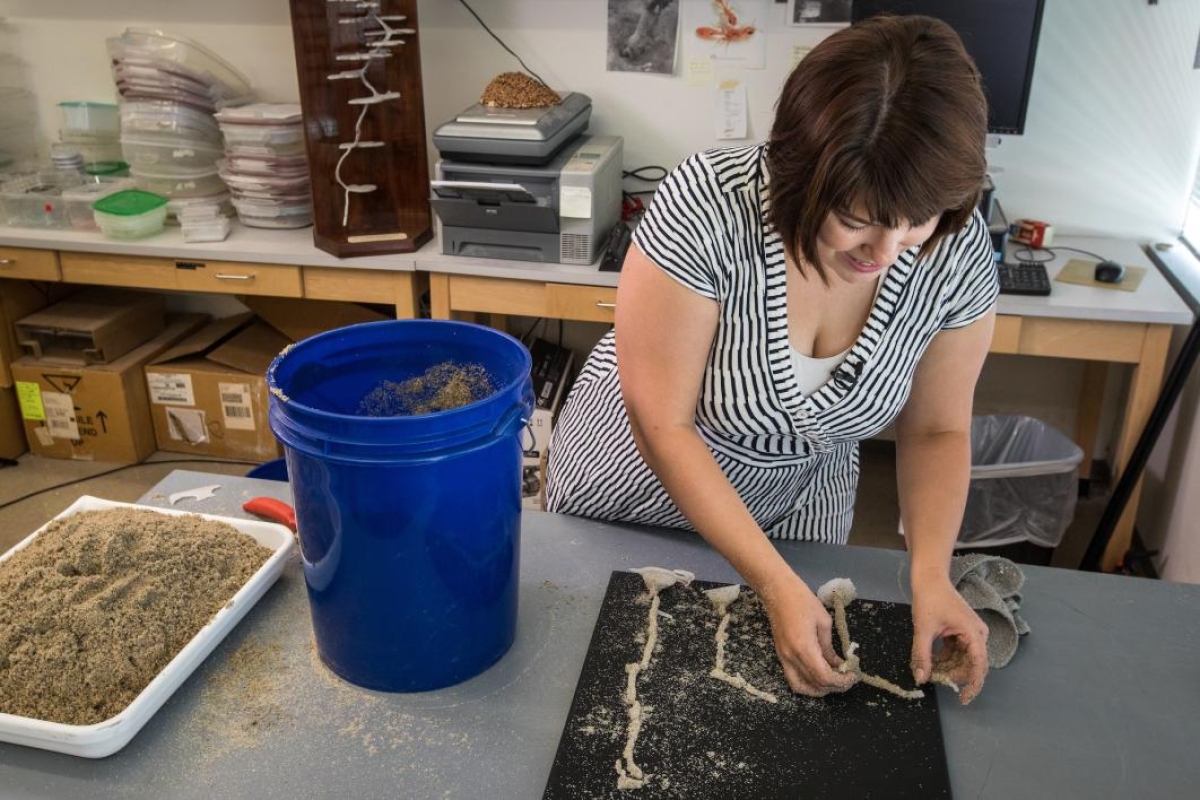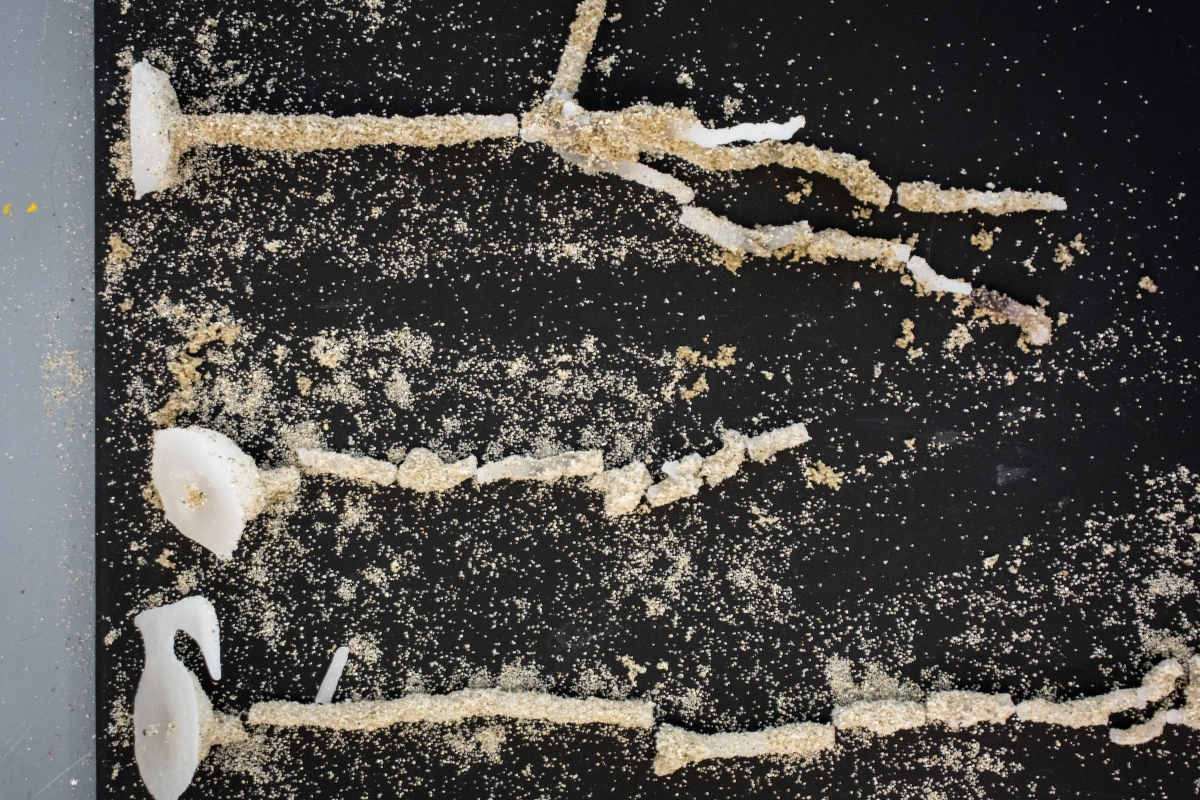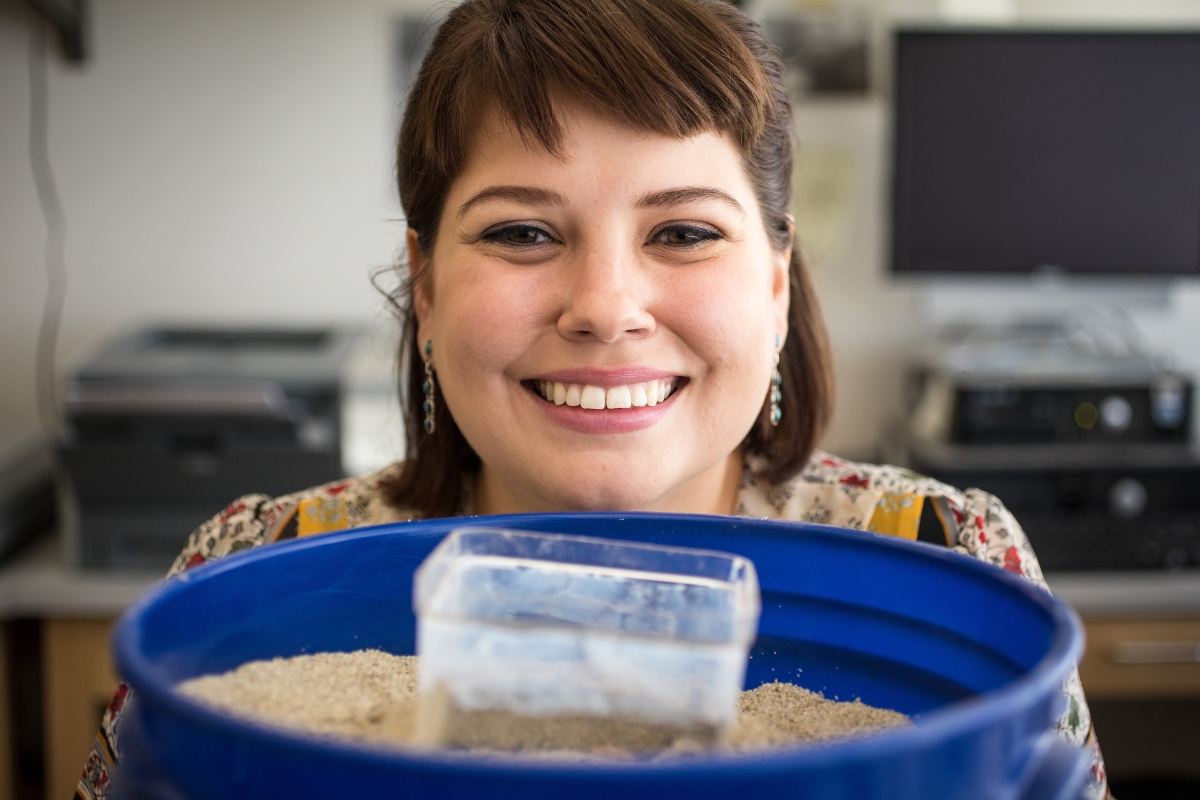Building a better ant castle
In the ant world, a mix of worker sizes leads to building superior nests
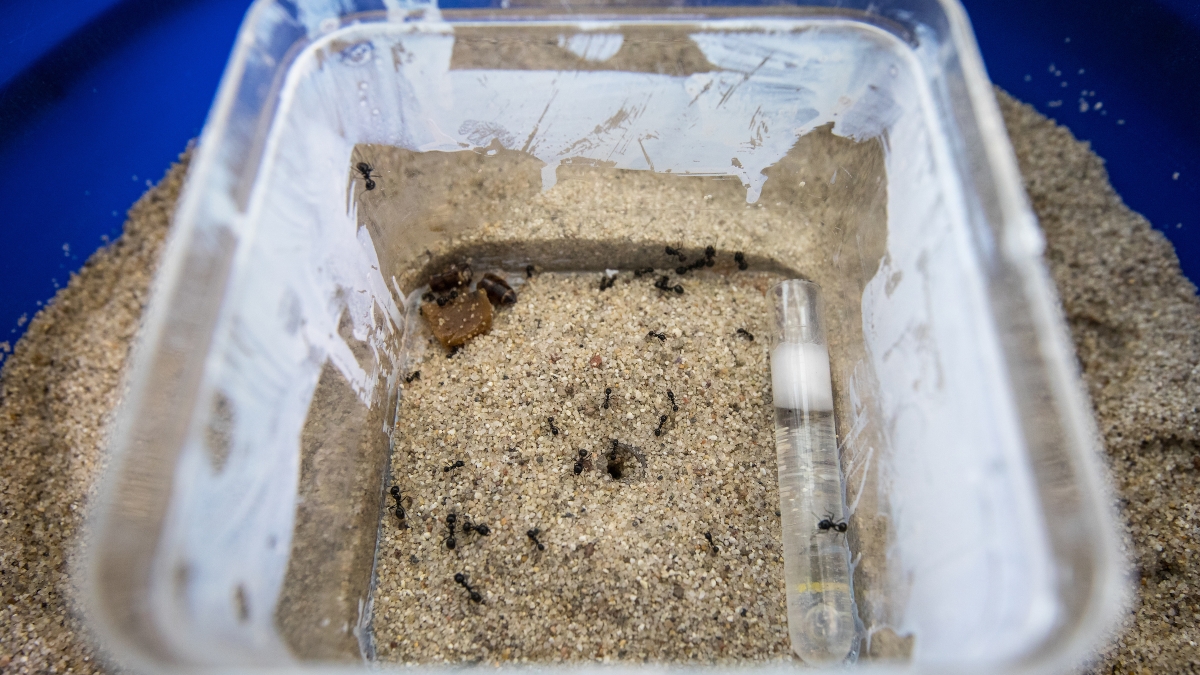
Some civilizations build Gothic cathedrals, and some build huts.
It’s the same with ants, at least from an evolutionary context, but having a diverse group of builders might lead to superior structures.
Researchers at Arizona State University discovered that ant colonies with a mix of large and small workers build better nests than colonies with only small or large workers. Mixed-size groups built longer nests, excavated more sand and produced more architecturally complex nests than single-size worker groups.
Building a new home quickly has a lot of advantages, said Christina Kwapich, lead author of a new study on the subject.
“What we showed is that when you develop that polymorphism early, you can get under the ground faster,” said Kwapich, a postdoctoral research associate in the School of Life SciencesThe School of Life Sciences is part of the College of Liberal Arts and Sciences..
Video by Ken Fagan/ASU Now
Any colony that can get under the ground faster has an advantage in a hot arid environment like the desert, especially when a colony is new. All ant colonies start with one or two queens. When their first workers emerge, they usually move. After about a year, a colony with a worker group of different-sized ants will move the little empire a few yards away. It’s a vulnerable time.
“When you have a mixed group of worker sizes, the nest develops more rapidly,” Kwapich said. “The rate at which the nest is built is much higher when you have multiple sizes working on it. That’s important for a desert-living species, particularly this one which is prone to desiccation. They build multiple new nests sometimes in a year — they might move their whole colony — or they might build a nest and attach it on to their existing nest structure.”
Very few ant species have different body sizes, Kwapich said.
“People think there must be some kind of a function, so people have tested different ideas,” she said. “They looked at whether large workers collected large seeds and small workers collect small seeds but there’s no real evidence there’s a division of labor during foraging. We see that both sides dig the nest, so there’s no real division of labor in terms of who’s doing what.”
One of the goals of the study was to see if the workers’ sizes influenced anything at the colony level.
“It’s clear that when colonies have these different size distributions, then this very important colony-level trait — nest architecture — is being affected,” she said.
A more elaborate nest does a lot for the colony. Think about a family of four crammed in a one-bedroom apartment and the same family in a five-bedroom house with a yard and a pool.
Nests in general have been shown to have all kinds of physiological properties: They’re an extension of the colony itself. They are fortresses, defending the colony, and factories, where labor is organized with young workers at the bottom and old workers at the top. Different chambers have different functions, such as storage or processing. Leaf cutter nests have ventilation shafts.
“In the case of subterranean ants, we know very little about what the real function of different features of the architecture is, so how variation in architecture might influence the way that the colony processes seeds or defends itself, we don’t know,” Kwapich said.
The study was published in Philosophical Transactions of the Royal Society B last month. Co-authors were Gabriele Valentini and Bert Holldobler.
Top photo: Postdoctoral research associate Christina Kwapich replicates her study, "The non-additive effects of body size on nest architecture in a polymorphic ant," on July 25, 2018. Groups of 60 ants had 48 hours to build their nest colonies in 5-gallon buckets filled with sand. Photo by Charlie Leight/ASU Now
More Science and technology

ASU receives 3 awards for research critical to national security
Three researchers in the Ira A. Fulton Schools of Engineering at Arizona State University have received grant awards under the Defense Established Program to Stimulate Competitive Research, or…
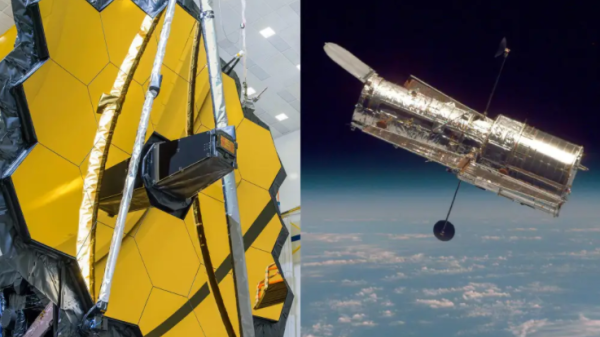
Celebrating 34 years of space discovery with NASA
This year, NASA's Hubble Space Telescope (HST) is celebrating its 34th anniversary of the world's first space-based optical telescope, which paved the scientific pathway for NASA's James Webb Space…

Making magic happen: Engineering and designing theme parks
The themed entertainment industry is widespread and diverse, encompassing everything from theme parks to aquariums, zoos, water parks, museums and more. The Theme Park Engineering and Design…
